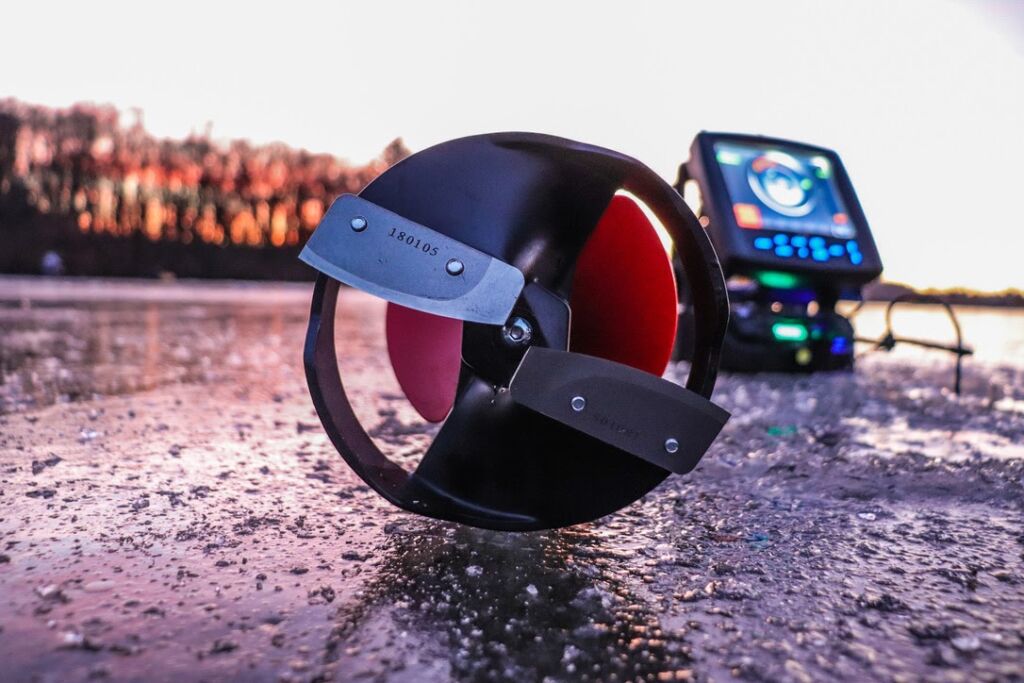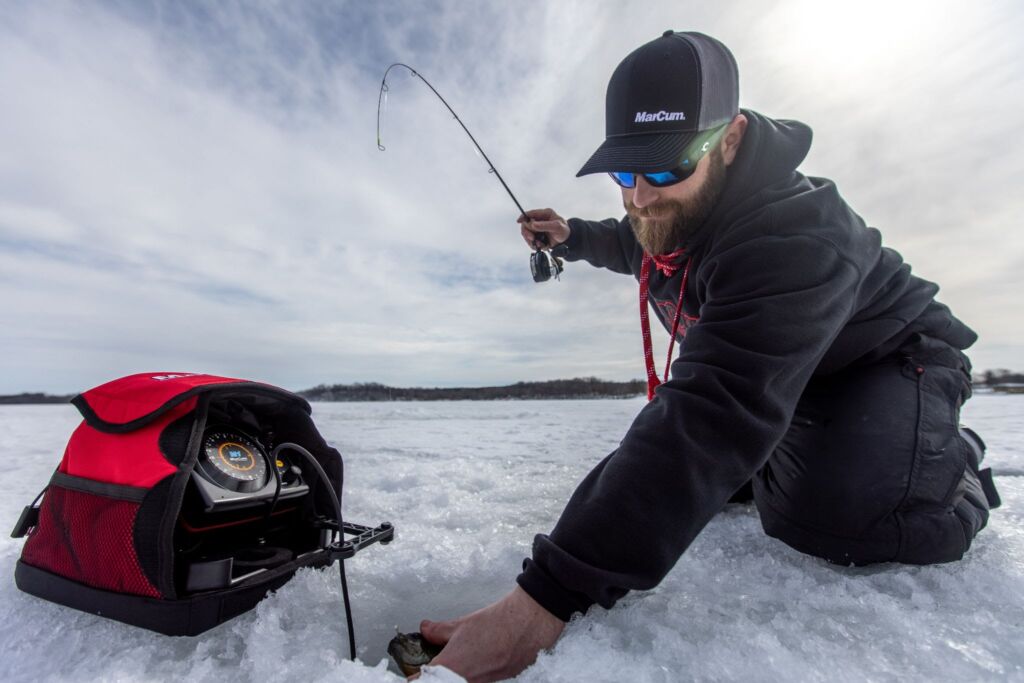
ICE FISHING FOR THE NEW ANGLER
There’s no doubt that the COVID era has had an impact on the outdoor industry. With closures, canceled travel plans, or changes in regularly scheduled activities, unprecedented numbers of folks have either found or rekindled a love of the outdoors. During the warmer months, there’s a plethora of activities to get a person out of their home. In the Midwest, we are blessed (or cursed depending on how you look at it) with winter – and it lasts more than just a few months. This can make activities a bit harder to find, or at times convince yourself to participate in outdoor activities.
Enter ice fishing season.
What’s the appeal of ice fishing?
From an outsider’s perspective, ice fishing may seem rather mundane and frankly a bit cold. However, with the right attitude and the adequate equipment ice fishing is rather enjoyable. In fact, there are a number of reasons why people like ice fishing.
First, ice fishing is appealing because it doesn’t require exorbitant amounts of gear to actually fish. Sure, that may seem deceiving when you see a fisherman roll by in a tracked UTV loaded to the gills with all sorts of equipment, but in all reality that’s not required. Some rods and reels, tackle, an auger, winter apparel, and – if you’re up for it – a shack or electronics and you are ready to fish.
Ease of access is also a plus factor related to ice fishing. During the summer months, you need to have a boat, kayak, or some other mode of transportation if you don’t want to fish from the bank. In the winter, you can fish anywhere you’re willing to haul your gear too. By mid-winter, you can likely drive your vehicle on ice too, so that aids in access. Additionally, boats also require boat launches. During the winter, you can access at any location you can get your equipment across – dependent upon it being a legal access of course.
Ice fishing is also a great group activity. It’s much easier to get a group together on the ice than in the boat. Whether you decide to use an ice shelter or just fish on the open ice, it’s a fantastic activity and a great way to spend time with friends and family. You can easily drag along items like a grill, cooler, etc. to enhance the experience.

What fishing gear do I need to start ice fishing?
Ice fishing has limited equipment requirements in comparison to other outdoors activities. A handful of items are all that’s needed to have a successful and enjoyable day on the ice. Some of the items you need to start ice fishing are categorized below:
Ice Fishing Apparel – Stay Warm & Comfortable!
Winter apparel is one of the more overlooked necessities required for ice fishing. If you’re cold, you’re likely not going to have fun. It’s not necessary to have the best, especially when you’re just starting out – but it is smart to invest in quality boots, gloves, and some sort of ice suit or outerwear. Layering is an important piece to staying comfortable, so plan to dress appropriately.
Ice fishing Auger – Drill a Hole!
Before you can start fishing for the day, you need a way to get a hole in the ice. The old saying, ‘There’s more than one way to knit a sweater’ applies well to this situation. Hand augers, electric augers, and gas/propane augers alike, all have their distinct advantages and drawbacks. Ultimately, the best auger for you really depends on how you fish and when you fish.
Hand augers are lightweight and inexpensive, but you also have to provide the horsepower behind the drill. These are great for early ice, but as the season progresses, you may want to look at a powered version to save yourself some extra work.
Gas and propane augers can drill countless holes with limited issues. If they’re well taken care of, they will last a lifetime. The main downside, however, is weight. On average, gas and propane augers weigh significantly more than a hand auger or electric auger. Not to mention, you have to haul around a gas can or propane cylinders to keep these going.
Electric options are the newest members of the auger family. Two types of electric based augers fall into this category: electric power augers and drill based electric augers. Electric power augers are similar to gas and propane augers, but they are battery powered. Drill based electric augers include the actual auger shaft, but are powered via a cordless drill. Both of these options tend to weigh significantly less than their gas and propane counterparts, making them much easier to handle on the ice. The downfall to these types of augers typically comes later in the season when the ice is thicker (i.e. the more holes you want to drill, the more batteries you’ll need).

Ice Fishing Rods and Reels – Set the Hook!
Ice fishing rods and reels are essentially sized down versions of their open water counterparts. Rod lengths, powers, and actions are designed to better accommodate ice fishing lures and their associated techniques. Reels are often smaller in size and feature shallower spools because line capacity is less of an issue when fishing through the ice. Both of which are typically designed to handle the weather conditions faced while ice fishing.
As a new angler, it’s important to decide on what species you plan to target because that will greatly influence your rod and reel choice. Using a rod and reel that is designed for the fish you target, will make you a more successful angler. If you plan to target panfish, an ultralight to light power rod will better suit the lures needed to catch panfish. If you plan to target walleyes or other larger gamefish species, look to a medium light or medium power rod as heavier rods will be more effective for handling larger lures and fish.
Rod length should also play a role in your decision. Longer rods are typically better for fishing outside, while shorter rods are better suited for fishing in a shack. “I often rely on rods that can be used both inside and outside of a shack. For me, these are rods in the 28” to 32” range. Having dual purpose rods cuts down on the amount of gear I need to haul on the ice.” states Blake Tollefson.
Some tackle is obviously necessary too, but don’t overwhelm yourself. There are countless choices in any given sporting goods store, but to start, keep it to just a few. Buy your tackle based on the species you intend to target.

Ice Fishing Shelter – Stay out of the Elements!
Shack, shelter, shanty, fish house – whatever you want to call it, they are certainly useful for your time on the ice. While they’re not entirely necessary, they can make all the difference between having a terrible time and having a good time. As discussed regarding apparel, if you’re cold on the ice, you’re likely not going to have as much fun.
Ice shacks have been around for decades, but they’ve evolved into two major types: flip overs and hub style shacks. Flip overs are great because they feature built-in seating and a sled that allows you to haul around all of your equipment. Simply flip over the shack, install a few support poles, and you’re ready to fish. The major downside to these types of shacks is that they are bulky, heavy and usually more costly than others. Additionally, seating is limited to the number of pre-installed seats.
Hub shacks, on the other hand, are relatively lightweight and easy to haul around. These pop-up shelters pack down quite small so even cars and small SUVs can accommodate them. Hub shelters are typically more cost effective than other shack types. Seating is determined by the number of seats your shack will accommodate. The downfall to these shelters are related to the setup, as they take a little more time to set up and windy conditions can make them a bear. Additionally, hubs also don’t include a sled so you’ll want a way to haul it around.
Ice Fishing Electronics – Find more fish!
Electronics – like sonars and underwater cameras – might be one of the most important tools in regards to making fishing more enjoyable. Fishing is great, but the catching makes it that much sweeter – and these tools are designed specifically to help you do just that.
Ice sonar (flasher) allows you to “see” fish below the ice. By seeing, I mean a series of colored lines on a display that represent fish. Flashers are effective at nearly all depths because you can see the entire water column. However, because of their design the area they can see from side to side is approximately one-third of the overall depth. For example, if you are fishing in 10 feet of water, you will see about three feet of the bottom around the hole. For a new ice angler, there are several options on the market, like MarCum’s M1. The M1 is an entry level model but it has features, like zoom, that aren’t available on units at similar price points.
If actually seeing the fish is more your style, underwater cameras are a great choice. These tools feature a corded camera attached to a portable screen that can be taken with you on the ice. Cameras are used at fixed depth, so the area they can cover vertically is far less than the area they can cover horizontally. MarCum’s VS485c provides a high quality viewing experience that isn’t hard on the wallet – making it an ideal choice for beginners. The VS485c features a high resolution screen that can be operated in color or B&W, as well adjustable camera settings, and video out for recording.

These are both invaluable tools for determining if fish are present, evaluating how the fish react to your bait, and ultimately catching more fish. According to Blake Tollefson “I don’t know what I’d do without a flasher and camera. They are two of the most important tools in my ice fishing arsenal. Once you start using electronics, it makes it hard to fish without them.”

In closing, ice fishing is a great activity to get you out of the house during the winter months. As a beginner, it’s important to invest in the proper ice fishing gear, dress warmly, and enjoy your time on the ice.








